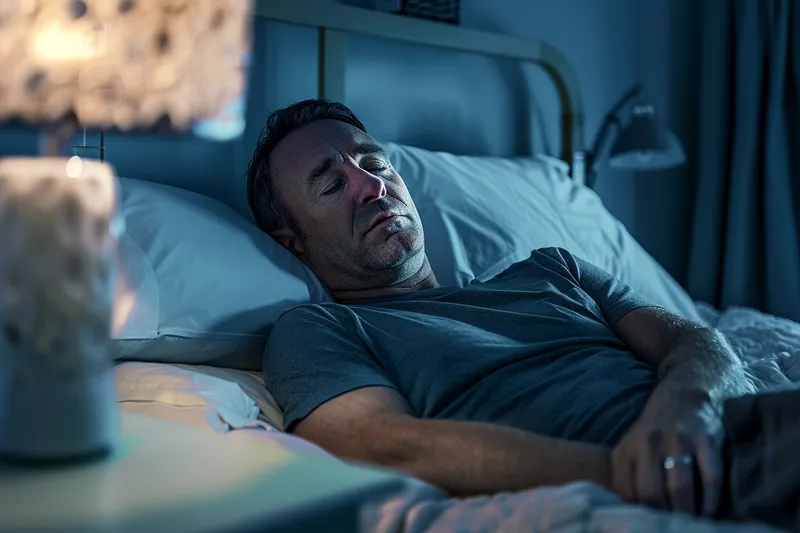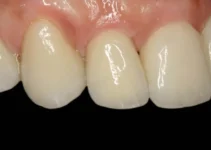Many people question whether sleep apnea can be fatal. Indeed, this sleep disorder, characterized by repeated breathing interruptions during sleep, poses significant health risks if left untreated. These interruptions, known as apneas, can lead to severe oxygen drops in the blood, causing strain on the cardiovascular system. Long-term effects of untreated sleep apnea include high blood pressure, heart disease, and an increased risk of stroke. The severity of the condition and its potential to influence other health issues underlines the importance of seeking medical advice and effective treatment to mitigate these risks.
What Is Sleep Apnea?
Sleep apnea is a serious sleep disorder that happens when a person’s breathing is interrupted during sleep. People with untreated sleep apnea stop breathing repeatedly during their sleep, sometimes hundreds of times. This means the brain—and the rest of the body—may not get enough oxygen.
There are three main types of sleep apnea: *obstructive sleep apnea* (OSA), *central sleep apnea* (CSA), and *complex sleep apnea syndrome* (treatment-emergent central sleep apnea). Each type has different causes and can lead to serious health complications if not treated properly. 
Understanding sleep apnea is crucial for early diagnosis and treatment. The condition can lead to a variety of health issues, including cardiovascular diseases, diabetes, and cognitive impairments. Additionally, it’s associated with an increased risk of car accidents due to daytime sleepiness and decreased alertness.
Definition and Types of Sleep Apnea
Obstructive Sleep Apnea (OSA) is the most common type of sleep apnea. It occurs when the muscles in the back of your throat relax excessively to allow normal breathing. This relaxation leads to a blocked airway, which interrupts breathing. Factors such as obesity, smoking, and anatomical features like a thick neck circumference or narrowed airway can increase the risk of OSA.
Central Sleep Apnea (CSA) is less common and occurs when the brain fails to send proper signals to the muscles that control breathing. Unlike OSA, the problem is not the airway being blocked, but rather the brain’s inability to signal the muscles to breathe. CSA can be caused by medical conditions affecting the brainstem, such as stroke or heart failure. Complex Sleep Apnea Syndrome, also known as treatment-emergent central sleep apnea, occurs when someone has both OSA and CSA. This can happen when someone who has been treating OSA with a CPAP machine starts to develop symptoms of CSA.
Symptoms to Look Out For
Recognizing the symptoms of sleep apnea can lead to early diagnosis and treatment, significantly improving quality of life. Some common signs of sleep apnea include:
- Loud snoring, which is often more prominent in OSA.
- Episodes of breathing cessation during sleep witnessed by another person.
- Gasping or choking during sleep, which causes awakenings.
- Daytime fatigue and sleepiness, even after a full night’s sleep.
Additional symptoms can include waking up with a dry mouth or sore throat, morning headaches, difficulty concentrating, and mood changes like depression or irritability. These symptoms can often be overlooked or attributed to other causes, making awareness critical. It’s essential to consult with a healthcare provider if you suspect you or a loved one might have sleep apnea. Diagnosing and treating sleep apnea can prevent complications and improve overall well-being. For more in-depth information on related health topics, feel free to explore other articles available on our site.
Health Risks Associated with Sleep Apnea
Sleep apnea is a prevalent sleep disorder characterized by repeated pauses in breathing during sleep. These interruptions can last for a few seconds to minutes and may occur up to 30 times an hour. Sleep apnea not only affects the quality of sleep but also poses numerous health risks if left untreated. Addressing these risks can significantly improve one’s overall health and quality of life.
There are multiple health issues associated with sleep apnea, ranging from cardiovascular problems to cognitive impairment. Understanding these risks is crucial for anyone who suspects they may have this condition. Early diagnosis and treatment can help mitigate these adverse effects.
Cardiovascular Problems
One of the most significant health risks associated with sleep apnea is its impact on cardiovascular health. During an apnea episode, the oxygen levels in the blood drop dramatically, which can strain the cardiovascular system. This strain can lead to elevated blood pressure, commonly known as hypertension. Studies have shown that untreated sleep apnea can double or even triple the risk of developing high blood pressure.
Moreover, the condition has been linked to various heart diseases, including heart attacks and strokes. The intermittent lack of oxygen can cause oxidative stress and inflammation, compromising the integrity of blood vessels and the heart. People with severe sleep apnea are at a higher risk of heart failure and even sudden cardiac death compared to those without the disorder.
Another cardiovascular issue related to sleep apnea is arrhythmias, or irregular heartbeats. The frequent interruptions in breathing can disrupt the normal heart rhythm, leading to episodes of atrial fibrillation or other types of arrhythmias. This can further increase the risk of stroke and other heart-related complications.
Cognitive Impairment
Sleep apnea doesn’t just affect physical health; it also has a notable impact on cognitive functions. The repeated interruptions in sleep prevent the brain from attaining the deep, restorative stages of sleep necessary for optimal cognitive and emotional functioning. This sleep fragmentation can lead to significant cognitive decline over time.
People suffering from sleep apnea often report issues with memory, concentration, and decision-making skills. The lack of oxygen during apnea episodes can affect the brain’s microstructure, reducing its ability to process and store information effectively. This can result in poorer job performance and increased risk of accidents and errors.
Additionally, sleep apnea is linked to mood disorders such as depression and anxiety. The chronic fatigue and poor sleep quality can exacerbate these conditions, leading to a vicious cycle of deteriorating mental health. It is not uncommon for people with sleep apnea to experience irritability, mood swings, and even symptoms of clinical depression.
Metabolic Issues
Sleep apnea is also closely associated with various metabolic disorders, including obesity and diabetes. The relationship between sleep apnea and obesity is particularly concerning, as each condition can exacerbate the other. Poor sleep quality and the resulting fatigue can lead to weight gain, which in turn can worsen sleep apnea symptoms.
Insulin resistance is another metabolic issue linked to sleep apnea. Studies have demonstrated that disrupted sleep patterns can affect how the body responds to insulin, increasing the risk of developing type 2 diabetes. The intermittent hypoxia experienced during apnea episodes can also lead to metabolic dysregulation, further increasing the risk for this chronic condition.
Increased appetite and poor dietary choices are common among those suffering from sleep apnea. The hormonal imbalances caused by disrupted sleep can lead to increased levels of ghrelin, the hunger hormone, and decreased levels of leptin, the satiety hormone. This hormonal imbalance encourages overeating and unhealthy food choices, contributing to weight gain and metabolic issues.
Understanding these health risks can be the first step towards seeking appropriate treatment for sleep apnea. The benefits of addressing this condition extend far beyond improved sleep quality, encompassing overall health, mental well-being, and long-term life expectancy. For more detailed insights on related topics, feel free to explore our other articles.
Diagnosis and Treatment Options
Sleep apnea is a condition that significantly impacts one’s quality of life and can lead to severe health complications if left untreated. The diagnosis and treatment of sleep apnea involve a multifaceted approach where timely recognition and appropriate therapeutic interventions are key. This section will cover how sleep apnea is diagnosed and the various treatment options available.
Advancements in medical science have made it easier to accurately diagnose sleep apnea. Treatment methodologies have also evolved, offering patients a range of solutions tailored to their specific condition and lifestyle. Understanding these options helps in formulating an effective treatment plan aimed at alleviating symptoms and improving overall health.
Early intervention is crucial. Untreated sleep apnea can lead to a host of complications, including cardiovascular issues, cognitive impairment, and metabolic disorders. Hence, accurate diagnosis and timely treatment are essential for effective disease management.
How Sleep Apnea is Diagnosed
The diagnosis of sleep apnea typically begins with a comprehensive medical history and a thorough physical examination. During the initial consultation, healthcare providers will look for symptoms such as loud snoring, daytime sleepiness, and observed episodes of breathing cessation during sleep. These indicators often prompt further investigations.
The gold standard for diagnosing sleep apnea is an overnight sleep study known as polysomnography. This test monitors various physiological parameters during sleep, including brain activity, heart rate, blood oxygen levels, and airflow. Based on the collected data, clinicians can determine the severity and type of sleep apnea, whether it be obstructive, central, or a combination of both.
In some cases, home sleep apnea testing (HSAT) may be recommended. This diagnostic tool offers a more convenient and cost-effective alternative to in-lab studies. It involves the use of portable monitoring devices that patients can use in the comfort of their own homes. While HSAT may not capture as much detail as polysomnography, it is quite effective in diagnosing moderate to severe obstructive sleep apnea in high-risk patients.
Continuous Positive Airway Pressure (CPAP)
Continuous Positive Airway Pressure (CPAP) is considered the first-line treatment for obstructive sleep apnea. CPAP therapy involves the use of a machine that delivers a constant stream of air through a mask, keeping the airways open during sleep. This prevents the episodes of airway collapse that characterize obstructive sleep apnea, thereby improving sleep quality and reducing associated health risks.
Studies have shown that CPAP therapy is highly effective in reducing daytime sleepiness, improving cognitive function, and lowering the risk of cardiovascular events. However, patient compliance can be a challenge. Many individuals find the CPAP mask uncomfortable or cumbersome, which can lead to inconsistent use and reduced therapeutic efficacy.
To enhance compliance, manufacturers have developed a variety of CPAP masks and machines with features designed for comfort and ease of use. Heated humidifiers, adjustable pressure settings, and quieter motors are some innovations aimed at improving patient experience. Healthcare providers play a crucial role in supporting patients through the initial adjustment period and addressing any concerns that may arise.
Alternative Therapies
While CPAP remains the gold standard, several alternative therapies are available for patients who cannot tolerate CPAP or for those seeking other options. Oral appliances are one such alternative. These devices, which resemble mouthguards, work by repositioning the jaw and tongue to keep the airway open during sleep. Oral appliances are particularly effective for patients with mild to moderate obstructive sleep apnea.
Another alternative is positional therapy. Some individuals experience apnea episodes primarily when sleeping on their backs. Positional therapy encourages patients to sleep on their sides, thereby reducing the incidence of airway obstructions. Special devices and pillows can help maintain this position throughout the night.
In more severe cases or when other treatments fail, surgical interventions may be considered. Procedures such as uvulopalatopharyngoplasty (UPPP), genioglossus advancement, and maxillomandibular advancement can help by removing or repositioning tissues that obstruct the airway. Surgical options are often considered a last resort due to their invasive nature and associated risks.
Additionally, lifestyle changes can significantly impact sleep apnea severity. Weight loss, avoiding alcohol and sedatives, and maintaining a regular sleep schedule are all beneficial. Incorporating these changes alongside other therapies can enhance overall treatment outcomes.
Understanding the diagnosis and treatment options for sleep apnea is crucial for effective management of the condition. For more in-depth information on sleep health, you may find our other articles enlightening and beneficial.
Preventative Measures and Lifestyle Changes
Taking proactive steps to address and prevent sleep apnea can significantly improve your overall health and quality of life. By focusing on weight management, sleep position modification, and avoiding sedatives and alcohol, you can reduce the severity of your symptoms or even prevent the condition entirely. These lifestyle changes not only improve sleep apnea but also enhance your general well-being.
Weight Management
Maintaining a healthy weight is crucial for preventing sleep apnea. Excess weight, especially around the neck, can put pressure on the airways, causing them to collapse during sleep. Numerous studies have shown that losing even a small percentage of body weight can lead to significant improvements in sleep apnea symptoms.
Consider implementing a balanced diet rich in fruits, vegetables, lean proteins, and whole grains to achieve and maintain a healthy weight. Regular physical activity, such as walking, swimming, or cycling, can also aid in weight management. By shedding excess pounds, you can alleviate the strain on your respiratory system and improve your breathing during the night.
Sleep Position Modification
Your sleep position can have a substantial impact on the severity of sleep apnea. Sleeping on your back often exacerbates symptoms as it allows the tongue and soft tissues to fall backward, obstructing the airway. Research suggests that side sleeping is the most effective position for reducing sleep apnea episodes.
If you find it challenging to maintain a side-sleeping position throughout the night, consider using specialized pillows or devices designed to encourage side sleeping. Elevating the head of your bed by a few inches can also help reduce airway obstruction by promoting a semi-upright position.
Avoiding Sedatives and Alcohol
Sedatives and alcohol can relax the muscles in the throat, increasing the likelihood of airway collapse during sleep. These substances can also interfere with the body’s natural sleep cycle, leading to more fragmented and less restorative sleep.
To mitigate sleep apnea symptoms, limit or avoid the consumption of alcohol and sedative medications, particularly in the hours leading up to bedtime. If you rely on these substances to manage anxiety or sleep issues, consult with a healthcare provider to explore alternative treatments that do not exacerbate sleep apnea.
In summary, making conscious lifestyle changes can play a significant role in managing and preventing sleep apnea. By focusing on weight management, modifying your sleep position, and avoiding substances that relax the throat muscles, you can improve your sleep quality and overall health.
For more detailed insights and tips on managing sleep apnea, be sure to check out our other articles on related topics to gain a comprehensive understanding of this condition.
Exploring the Link Between Sleep Apnea and Mortality
Many people wonder about the severity of sleep apnea and its long-term health implications. Here, we explore the potential link between sleep apnea and increased risk of death.
Can sleep apnea lead to death?
While sleep apnea itself is not directly fatal, it can lead to serious health complications that may increase the risk of death. Conditions such as heart disease, stroke, and hypertension are commonly associated with severe untreated sleep apnea. Managing sleep apnea effectively with treatments like CPAP machines and lifestyle changes reduces these risks considerably.

My name is Salman Kapa, a 73-year-old expert in bone regeneration and dental implantology. With decades of experience in the field, I am dedicated to advancing our understanding of oral health and hygiene. Through my research and writing, I aim to contribute to the development of innovative solutions in dental care.




